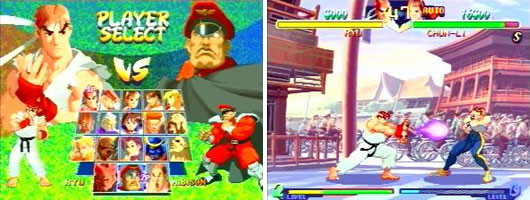
Final Fight, Street Fighter and SF II characters were all part of the same canon. Explaining how the characters crossed paths in between each series was inspired design. The art direction and creative risks they took were bold. Lead artist Bengus created an entirely new look and feel for the cast. They were younger, more cartoonish in proportion and presentation. They looked unlike characters from any other series and really stood out because of this. The entire game was a love letter to the respective franchises and a not so subtle nod to the Street Fighter fandom. As the series progressed it became more and more rooted in dramatic characters and over-the-top plots. Street Fighter was no longer about being the best fighter in a tournament, it was instead about saving the world from Shadowlaw. The fighters became like GI Joe special agents. It worked for the Zero series because it was very cartoonish, very animated. Design elements were pulled from typical anime shows. Otaku or nerd culture became a contributing factor in the design choices. Where I take Mr. Ono to task is that those ideas were fresh in 1995, reusing the formula 20 years later but putting the graphics in 3D was not revolutionary. His ideas of putting oily men, fat men, effeminate men and ugly minority caricatures in the series were poorly conceived.
Look back at the legacy that Street Fighter Zero created. The young schoolgirl Sakura would become the breakout star of the game. She was introduced in Street Fighter Zero 2 in 1996. She would be joined by Cammy in Street Fighter Zero (SFZ) 3, released in 1998. She was presented younger than their original Street Fighter II versions. Young female leads were going over well with audiences, Karin Kanzuki (the rival to Sakura), R, Mika, Juni and Juli were also added in SFZ3. The reaction was so well to this influx of female stars that the studio decided to flesh out the origins of Cammy and explain her connection to Shadowlaw. This was when Bengus and the team introduced us to the infamous Dolls.
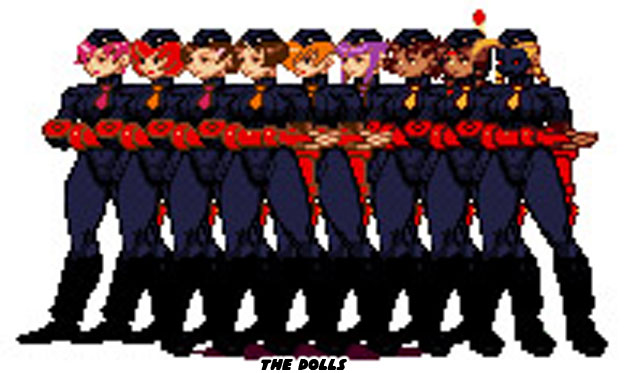
Vega / M. Bison (Dictator) had surrounded himself with young highly trained special agents. Cammy was his star pupil nicknamed Killer Bee. The other Dolls were named after the months of the year. Juni and Juli were German for June and July. Each of them wore tight costumes with small ties on. As if they were some sort of military school uniform. Each Doll was a highly-trained assassin whose appearance was meant to be deceptive. Most were brainwashed and programmed to be specialists, some were naturally gifted, others had gone through genetic modification so that they were stronger or faster than any normal soldier. The girls were around 16-years-old making the Dictator seem like a creep but there was a precedence for his young apprentices. Japanese comics, animated shows and OVAs often revolved around teenage heroes. This went back to the earliest days of Japanese animation. The stars of the shows often tended to be much younger than heroes in western media. Comic book heroes in the USA were often adults and teenagers were sidekicks. That formula was almost opposite in Japan. The greatest pilot, race car driver, magician, or warrior in the stories were usually young and sometimes girls. This made them extremely popular with school-age audiences.
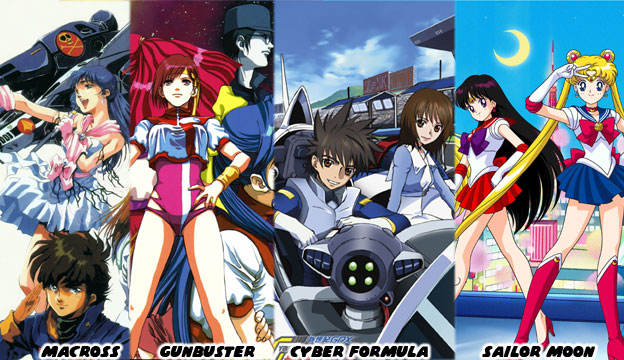
The designers at Capcom were all too familiar with the teenage tradition and created the Dolls as a sort of homage to the female leads in pop culture. Rather than just create a group of Cammy clones they decided that they would each come a different nation, each one would specialize in something. The studio didn't really have enough time to make Juni and Juli more unique than they had planned but the seeds were definitely planted some 18 years ago. Here's some news that certain to make a lot of Street Fighter fans feel old. There is a good chance that many of the new Street Fighter IV and V players were not born when the series began. They might have not even been around when the Alpha series ended or Street Fighter III was released. There are many characters that they are unfamiliar with from games they didn't know existed. It's likely they are wondering where the Dolls featured in Street Fighter V's Story Mode came from.
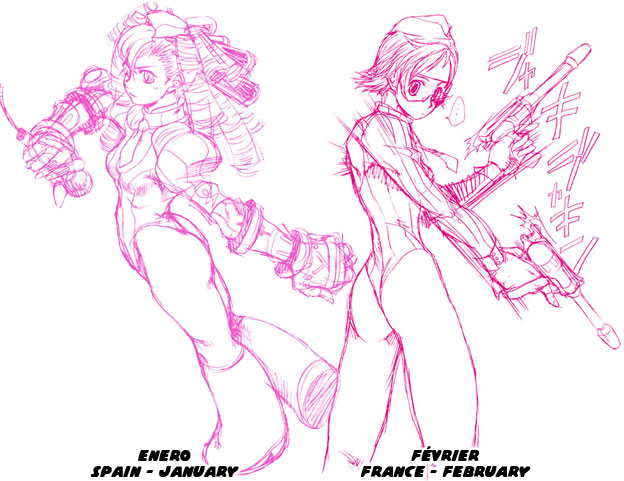
The Dolls had been featured in the Street Fighter comics by Udon and had cameos in the licensed comics in Japan and Hong Kong as well. However I believe that the definitive fan illustrations of the Dolls came from Ataru (NSFW) almost 20 years ago. He took the notes for each character and sketched out versions of each Doll that captured their personality and origin. Enero specialized in communications yet she was presented as a sort of idol character, hence the microphone. Many animé characters want to be idols in their own series. There are models and spokespersons but the singing kind of idol is the most popular. A good portion of the entertainment industry in Asia, including K-Pop from Korea and C-Pop from China, revolves around finding the next idol. Février was an expert at firearms and while she has a more traditional-looking firearm in Street Fighter V in Atatu's version her pistols were more like the science fiction revolvers that could be found in a classic animé series like Space Pirate Captain Harlock or Cobra.
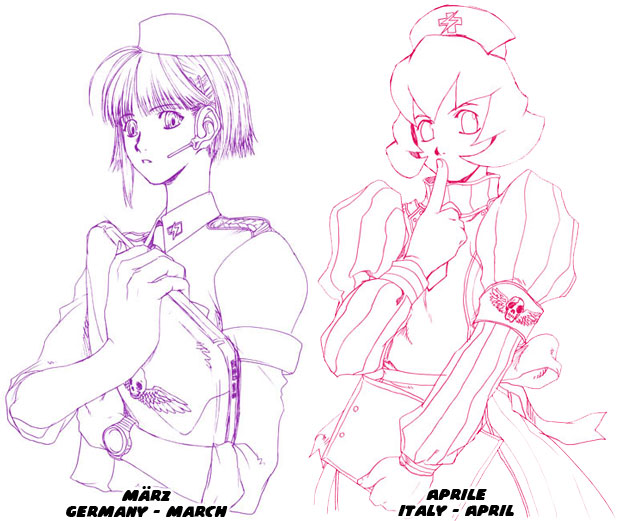
März was an information specialist and she kept her laptop with her everywhere she went. There were many hyper-intelligent / nerdy characters in animé. März filled in the role of hacker / genius for Shadowlaw very well. Aprile was a medic and cute nurse characters always went over well on both sides of the Pacific. There was a long-standing tradition in animé however where nurse characters often attacked lecherous boys with a bazooka-sized syringe. No word if Aprile could use one of those in combat.
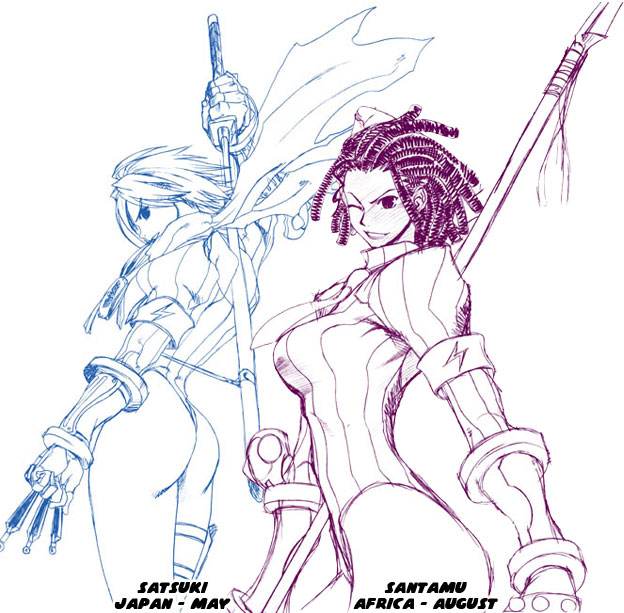
The first half of Dolls were spies or specialists of some sort while the second half were fighters. Each one studied a different form of combat and often used a weapon. Satsuki was the ninja of the Dolls. She had the familiar flowing scarf, It was seen countless times in manga and anime. In video games the scarf was synonymous with the assassin's fist. Galford and Hanzo in Samurai Spirits each had the long scarf, Capcom icon Strider and Sega mascot Shinobi also had a scarf. Santamu was originally Vietnamese but changed to Ethiopian. She was a sort of jungle girl trope. She had a spear and even small monkey when she went into battle.
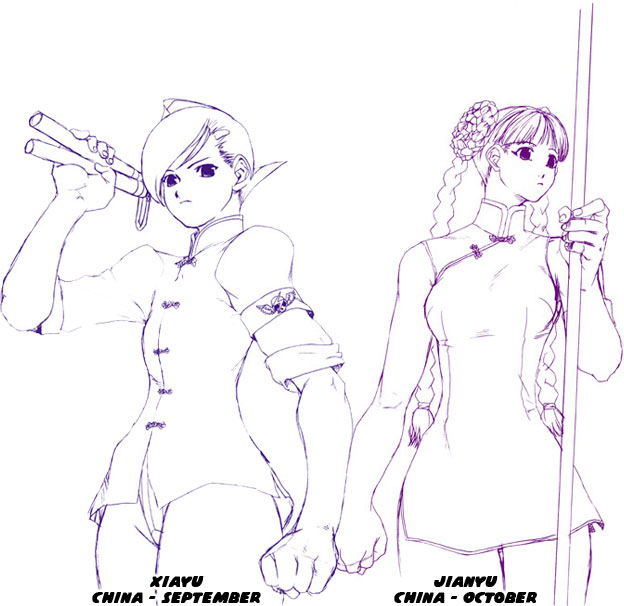
Of course no girl fighting team would be complete without Kung-Fu masters. The two Chinese characters each specialized in a particular weapon. Xiayu used a nunchaku and Jianyu used a staff. When Ataru sketched out the characters he made sure to get the subtlety of each character. The nunchaku was a non-traditional weapon that had actually been adapted from equipment used by rice farmers to separate the rice from the chaff. It was used by peasants to fight off bandits thousands of years ago but was made popular more recently in the Bruce Lee films. Lee was an unorthodox master that incorporated Eastern and Western fighting arts and conditioning into his regiment. He represented a break from tradition, the new form. Xiayu was symbolically cut from the same cloth, the new school kung-fu master. Her haircut and weapon reminded audiences of that. By comparison Jianyu used one of the oldest martial arts weapons ever created. Her costume her form was very traditional, she had more in common with Chun-Li than Bruce Lee. Both characters and even Chun-Li could be considered derived from the Pooh sisters. The enemies of Strider known as the Kuniang Martial Arts Club. Ataru did a fantastic job of conveying this in his illustrations.
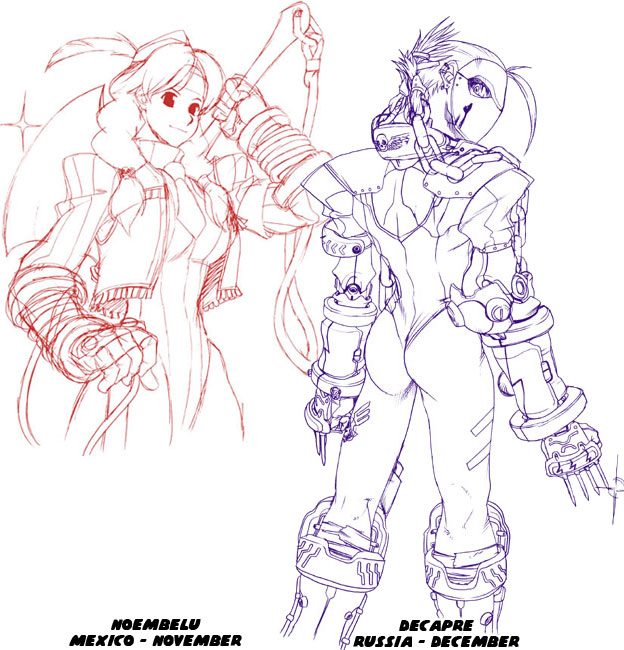
The last two fighters had a the strongest connection to the Street Fighter II universe. Noembelu was a member of the same tribe of Native Americans that T. Hawk was. Her braid, leather vest, oversized tomahawk and headdress were also suppose to reflect the native themes. Of all the Dolls I think Decapre was the most popular and most mysterious. She was seen as an Evil Cammy. She looked like an identical clone of Cammy but wore a dark metallic mask. Ataru gave Decapre armor that looked brutal. He went one step further and replaced the braids of Decapre with chains. It was a bold stylistic choice that really made her look like the evil twin fans never knew existed. It's great that the Dolls have returned to Street Fighter. I wish they had been featured in SF Zero 4 to be honest, they seem out of place in SF V. They are undoubtedly bringing in many new fans to the series and making them wonder where these characters came from. I hope this blog helped answer some questions. You can find out more about the Dolls and see how their look changed from Ataru's fan art to the modern interpretation by picking up the Udon comics. Be sure to leave a comment and tell me what you think about the Dolls in SF V. As always if you enjoyed this blog and would like to sponsor me please visit my Patreon page and consider donating each month, even as little as $1 would help make better blogs and even podcasts!

Great article as usual....someday I'd like to read your analysis on evil characters/variations...you know that kind of alternative with usually purple/bluish colors. I'm definitely in love with that kind of characters https://s32.postimg.org/tcg8jbh5x/evil_characters.jpg
ReplyDeleteZero, thanks for the comments. You've got an interesting idea but I'd talk about all villains and not just the purple ones. But I see your point, they are aesthetically very cool.
Delete